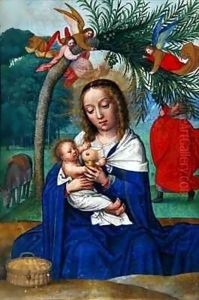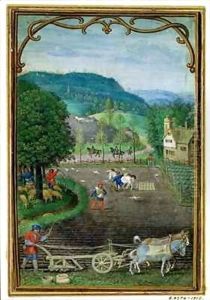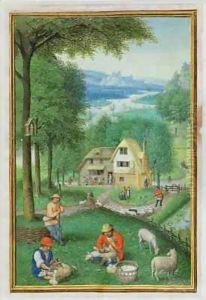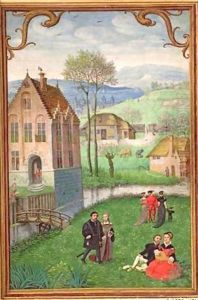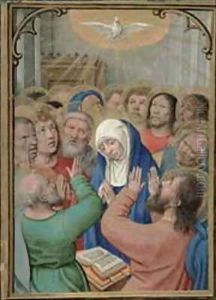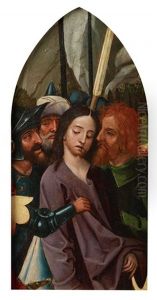Simon Bening Paintings
Simon Bening was a renowned Flemish miniaturist, born in Ghent, Belgium, circa 1483. He was the son of illuminator Alexander Bening, from whom he likely first learned the art of manuscript illumination. The Bening family was part of a dynasty of painters, and Simon would become the most distinguished among them. Simon's work was highly sought after across Europe, and he was known for his richly detailed and colorful miniatures that often depicted religious scenes and courtly life.
Bening moved to Bruges, which at the time was a vibrant center of art and commerce, and where he would spend most of his career. By the early 16th century, he had established himself as a master in the Guild of Saint John and Saint Luke. His clientele included members of the nobility and royalty such as Emperor Charles V and Don Fernando, the Infante of Portugal, for whom he created personal prayer books and other lavishly decorated manuscripts.
Bening's style evolved over the years, showing an increasing mastery of color and light, as well as a more intimate and natural representation of figures and landscapes. His works are characterized by their exquisite detail and the use of vibrant colors. He was particularly adept at depicting textures and materials, from the softness of skin to the intricate patterns of luxurious fabrics.
Simon Bening's contribution to the art of book illumination was significant, and he played a crucial role in the transition from medieval to Renaissance styles in Flemish art. His influence extended beyond his lifetime, as his works were copied and his techniques adopted by others. Bening's legacy is preserved in collections around the world, including the British Library, the Bibliothèque Nationale de France, and the J. Paul Getty Museum.
By the time of his death in 1561, Simon Bening was celebrated as one of the greatest miniaturists of his time. His work remains an important part of the history of European art, offering a window into the visual culture and piety of the Renaissance period.






